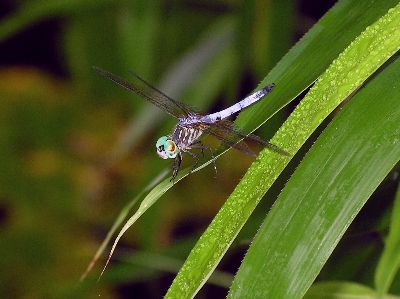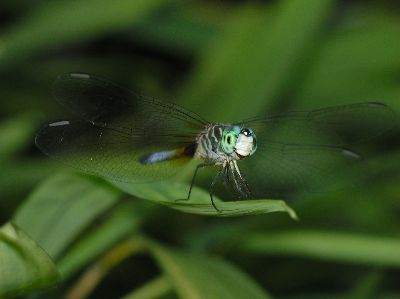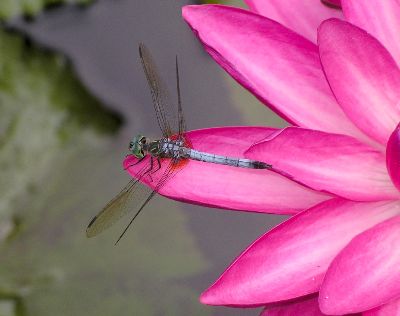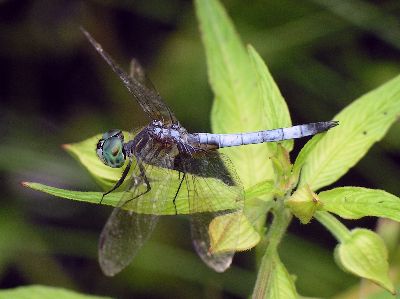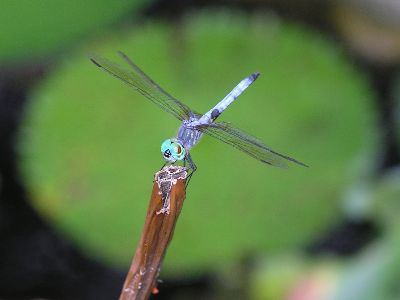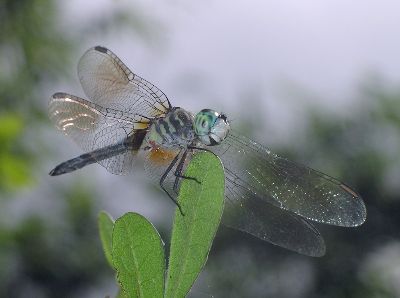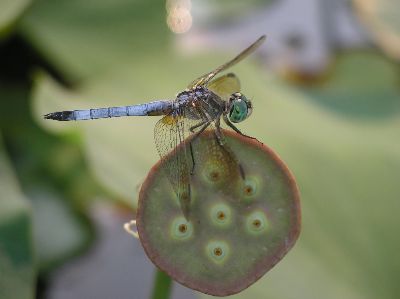The images presented in these galleries are reductions of photos taken by Valerie with a Pentax Optio 450 digital camera. The compression has been increased to 80% (100%=no compression) and the dimensions reduced in order to save bandwidth and facilitate page loading. The information below each image gives the size in pixels and kilobytes of the original file as well as the title by which to request the larger version. All of the original files are in jpeg format, most at about 95% compression, and are suitable for printing, desktop wallpaper, or detailed study. While the images here are free for the taking (right click - save as; do not link to these images directly), the larger versions are also available by sending a request to Valerie via . The frames around the gallery photos are not part of the same file and are only for presentation on this site.
Although the photos are free to use, they are copyrighted by LARVALBUG and remain the property of the owners of this site. We request that any public use of these images be accompanied by a credit to LARVALBUG.COM and, when appropriate, a link to our site (<a href="http://www.larvalbug.com/">LARVALBUG</a>). Commercial use of the large files can be arranged for a modest fee.
To request larger files or ask any questions please send an e-mail to Valerie at .
|
|
Blue Dasher (Pachydiplax longipennis). The stunning colors of dragonflies are delightful to photograph. The insects are, however, a bit difficult to approach because of their excellent eyesight and wary nature. Certain species, being more numerous, afford more chances at getting close enough for pictures. The blue dasher is a very common dragonfly in Austin and the photographs here were taken at both Zilker Garden and in our own yard. They seem to become accustomed to people and remain still even when viewed from only a few feet away. Another page presents photos of other dragonflies.
Dragonflies are often easiest to approach during the early morning, when cool temperatures make them less likely to fly. Blue dashers are seen in our area starting quite early in the spring.
The individual shown above is an immature male. The eyes are still brownish on top and blue on the bottom, but in a few days will change to the adult turquoise color. Many species of dragonflies undergo similar color changes once they reach their adult form and so have a slightly delayed sexual maturity.
Once the blue dasher acquires its adult colored eyes, it still continues to change slightly. The thorax, which is yellow and black striped, takes on a bluish tinge between the wings as the insect ages.
Females are encountered much less often than males, since they tend to perch in less obvious places. There are reports that the females also defend feeding territories, but I've never seen them do more than just sit still, usually further from the water than the males. As can be seen in the photo above, the females have a black and yellow marked abdomen.
The face of the blue dasher is white. A combination of the light blue abdomen, striped thorax, and aqua colored eyes and white face make this insect easy to identify.
Male perched on a tropical water lily blossom. The tip of the abdomen is black, and there is a varying amount of black near the base of the tail as well. Some individuals have almost no black marks right behind the wings while others have a large spot on each side, right above the yellow underside of the first few segments.
Blue dasher on water primrose (Ludwigia octovalvis). These dragonflies often perch very close to the water, which is one reason they are so frequently seen.
The strikingly colored eyes of the blue dasher tend to change hue depending on the angle of the light. All adults have turquoise eyes which can shine like gems in certain circumstances.
When viewed against the sky, the delicate wing coloration is visible. Male blue dashers have wings with an amber base and a slight brownish tint on the outer half.
This view of a male also shows the wing colors. It is perched on a lotus bud; the background is a lotus leaf.
This dragonfly is resting on a lotus seed pod in Zilker Gardens. The insects get so used to people that one can approach to within a few feet of males defending their territories.
|
